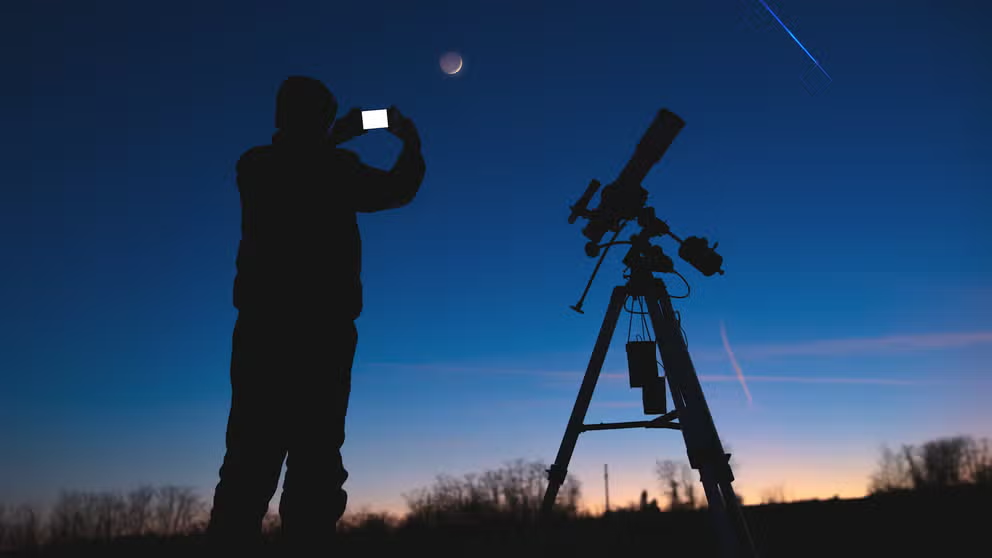Rare sky show: 2023's only blue moon also a supermoon on Wednesday
Super blue Moons only occur about once in 10 years but it can be as long as 20 years between the rare event, according to NASA. The next one is 14 years away.
A beginner's guide to photographing the night sky with your camera phone
From meteor showers to full moons, here are some tips you can use to capture stunning photos of the night sky with your camera phone.
Stargazers, listen up – Wednesday night will host a very rare event. The only blue moon of the year is also a supermoon and the last full moon of summer. Plus, Saturn makes a bright appearance near the Moon, just a few days from being its closest and brightest for the year, according to NASA.
"About 25 percent of all full moons are supermoons, but only 3 percent of full moons are blue moons," wrote NASA scientists on the Earth's Moon website. "The time between super blue moons is quite irregular ― it can be as much as 20 years ― but in general, 10 years is the average. The next super blue moons will occur in a pair, in January and March 2037."
WATCH OUT FOR THESE ASTRONOMICAL EVENTS IN 2023
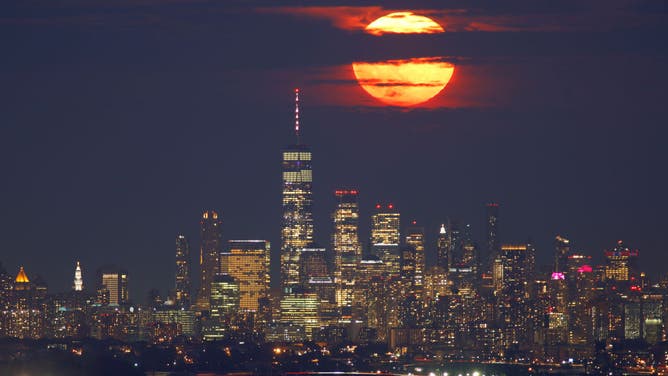
FILE: The full Buck Supermoon or Thunder Moon rises above Lower Manhattan and One World Trade Center in New York City on July 13, 2022.
(Gary Hershorn / Getty Images)
What is a blue Moon, supermoon?
A blue moon actually has nothing to do with the color of the Moon. NASA defines one as the second full moon in a single month. "Once in a blue moon" comes around every two-and-a-half years, on average.
MOON SHOT: TIPS ON HOW TO SHOOT THE MOON WITH A CAMERA
A supermoon is a full Moon that occurs when the Moon is at perigee, its closest distance to the Earth. The Moon appears 14% larger than the "micromoon", when the Moon is furthest away from Earth on its elliptical orbit, according to London's Natural History Museum. The supermoon also casts 30% more light on Earth compared to the dimmest full Moon.
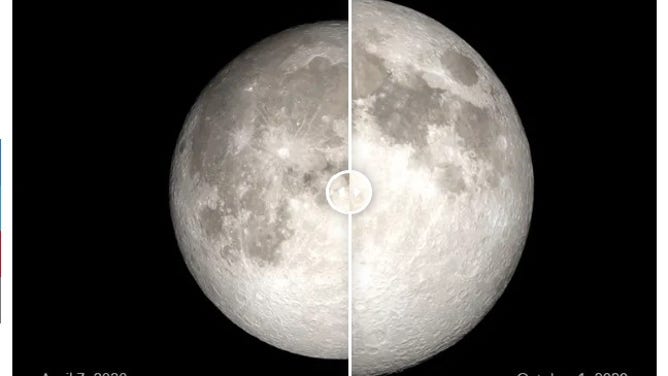
This is a NASA image comparing the relative size of the supermoon to the micromoon. NASA says it is about the difference between a quarter and a nickel.
(NASA's Scientific Visualization Studio / NASA)
Perigee is 226,000 miles, while the farthest distance between the Earth and Moon is apogee or 253,000 miles, according to NASA.
There are generally three to four supermoons a year. Each year from 2020-2024 will have four supermoons, according to the museum. The closest supermoon of the century will be in December 2052. The Earth and Moon are at their closest for two to five full moons each year.
Supermoons are slowly dimming though.
"The Moon is actually, very slowly, moving away from Earth, so our supermoon today was just a typical Moon a billion years ago," wrote Johnson.
When to look up
The moon will look largest as it rises and sets on the horizon because of the "moon illusion."
"It may be that when it is near the horizon there are objects, like trees and buildings, that it can be compared in size to, whereas in the middle of the sky there are no points of comparison, which makes it seem smaller," wrote Sara Russell, Researcher with the Natural History Museum.
Take a look at the horizon just after twilight.
INDIA'S MOON ROVER BEGINS EXPLORING NEAR LUNAR SOUTH POLE AFTER SUCCESSFUL LANDING
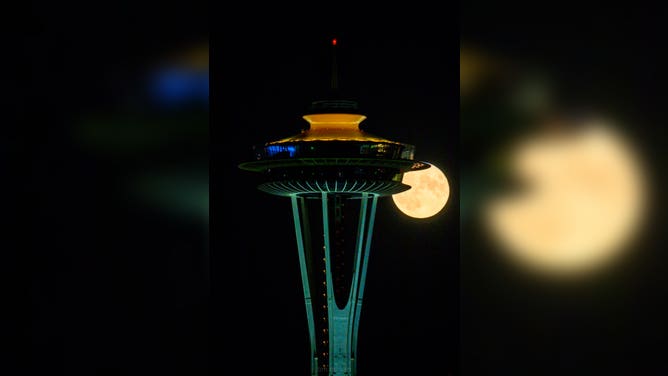
FILE: The Full Buck Supermoon slides near Seattle's Space Needle on July 13, 2022.
(Tim Durkan Photography)
Where did the name "blue Moon" come from?
Researchers have trouble pinpointing where the name blue Moon came from. A folklore expert suggested that the term came from a 1937 Maine Farmers' Almanac. The publication called certain full Moons blue Moons, but not the second one in a month, according to Sky & Telescope.
Actual blue Moons are possible, according to NASA. But the reason is land-based, not celestial.
"The key to a blue moon is having in the air lots of particles slightly wider than the wavelength of red light (0.7 micron)--and no other sizes present," explained a NASA scientists in a 2004 article. "This is rare, but volcanoes sometimes spit out such clouds, as do forest fires."
The particles scatter the Sun's red light reflected off the Moon but allow the blue light through to the eyes.
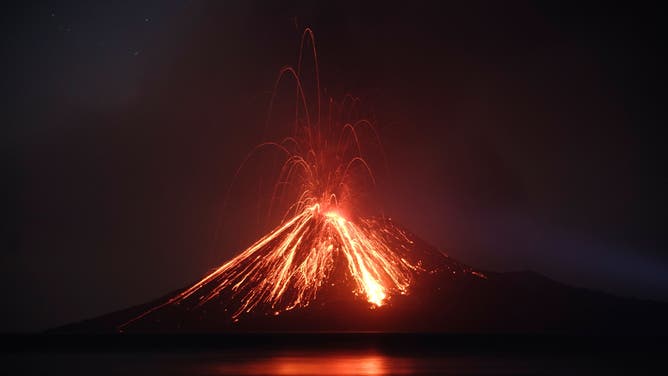
FILE: Lava streams down from Anak Krakatau (Child of Krakatoa) volcano during an eruption in 2018.
(FERDI AWED/AFP / Getty Images)
In 1883, the Krakatoa Volcano erupted in Indonesia and shot ash into the highest levels of the atmosphere. NASA said that moons were blue-colored for years.
Don't worry if the weather is not cooperating in your area on Wednesday night and Thursday morning. The moon will appear full from Tuesday night through Friday morning, according to NASA.
